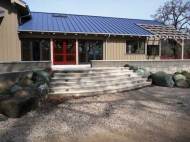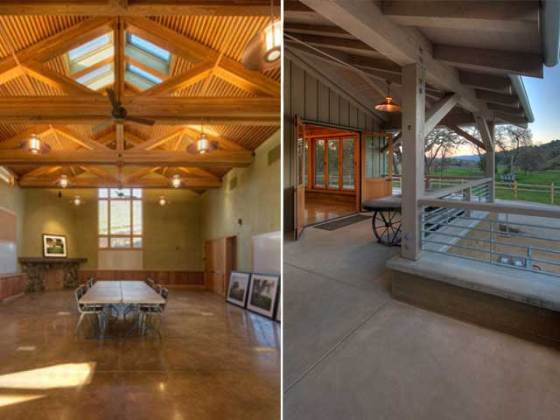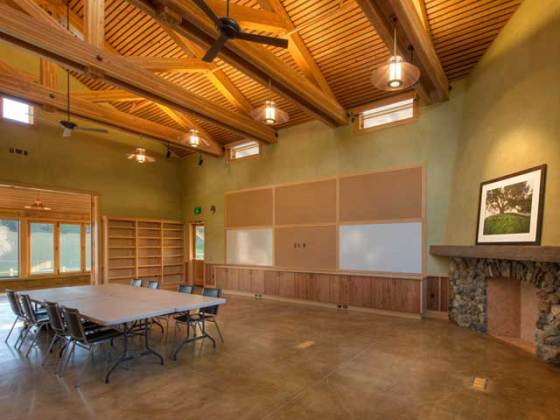Green architecture – Tipton Meeting House at Sedgwick Reserve
 The Tipton Meeting House at the University of California Sedgwick Natural Reserve has been designated one of the “greenest” buildings, earning maximum LEED design credits and LEED Platinum certification. For the first time, Sedgwick has a central gathering place for its nearly 4,800 annual visitors, with indoor and outdoor classrooms for workshops, meetings, remote telescope presentations, and K-12 outreach activities.
The Tipton Meeting House at the University of California Sedgwick Natural Reserve has been designated one of the “greenest” buildings, earning maximum LEED design credits and LEED Platinum certification. For the first time, Sedgwick has a central gathering place for its nearly 4,800 annual visitors, with indoor and outdoor classrooms for workshops, meetings, remote telescope presentations, and K-12 outreach activities.
“The Tipton Meeting House allows us to ‘walk the talk’ regarding environmental stewardship in the University of California’s Natural Reserve System”, said Kate McCurdy, a conservation biologist and director of the Sedgwick Reserve. “Our tri-fold mission of research, education, and public service will be enhanced by the addition of the new building and all that it offers in energy conservation, a thoughtful design that melds beautifully with the Santa Ynez Valley’s bucolic landscape, and 21st century technology in support of the scientific users of the reserve.”
The single-story, 280-square-meter (3,000-square-foot) building also houses the reserve’s administrative offices. The Tipton Meeting House was designed by Thompson Naylor Architects Inc. and built to have minimal impact on the land and incorporates many sustainable design features. It maximizes the use of local, natural, and recycled materials.
The building uses 60 percent less energy compared to a conventionally built building. It includes a solar-power array and passive solutions that promote summer cooling and prevent winter heat loss. Unlike most other projects which have their solar-power arrays and solar hot-water heating system located on the roof, the hot-water heating system and five solar-power arrays are located on the ground around the building. They are used to provide heating, hot water, and all the power at the site, since there is no natural gas service.
When the ranch manager mentioned the existence of two 113,500-litre (30,000-gallon) cisterns, the mechanical engineer came up with a cost-effective way to create geo-thermal heating and cooling — a key to the building’s low energy use. A water tank is used to collect the rainwater from the roof, and according to Jordan Sager, UCSB LEED program manager, it saves approximately 380,000 liters (100,000 gallons) of water used for flushing every year.
Since the number of attending people varies from a large number of people to small groups, a demand approach system was incorporated in the building’s ventilation system in order to save energy. Sensors provide information about the number of people inside the building at any given time and bring in the fresh air accordingly.
“We sought out local sources of recycled ceramic tile and petroleum-free paving. We searched for doors and windows that were made with sustainably harvested wood. Volunteers and the builders collected stones from the property and salvaged and renewed redwood planks from the demolished buildings on site”, said Dennis Thompson, one of the Thompson Naylor Architects Inc. founders. “This upfront investment saved money in construction and will save energy and water for years to come.”











Not bad, but I can’t notice abundance of daylighting inside. Even in the video they have to use artificial lighting during to film.
And good point about the Strange location of PV panels.